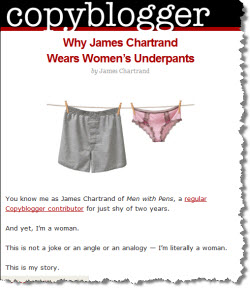(My latest column in the Eugene Register Guard. Click here for the original. Reposted here with permission)
 Social media marketing earthquake
Social media marketing earthquake
The social media marketing earthquake is already here. And, in keeping with the forecast theme in this month’s blue chip, here’s a prediction: content marketing tsunami.
The shaking started as social media took off with Facebook, MySpace, LinkedIn and early blogs. It continued with Twitter, Pinterest and Instagram.
So-called content marketing emerged. Marketing is getting people to know, like and trust you. Content marketing does that with blogging, online videos and other online content that businesses offer to people for free, through social media. Content marketing is theoretically free to businesses because they don’t pay for space, like they do with traditional advertising. But what isn’t free is the production of content that is interesting, useful, funny or just plain not boring on social media and blogs, as an alternative to advertising.
You can find examples of successful content marketing on the Web. Anita Campbell of Small Business Trends turned a thoughtful blog into a multi-million-dollar information business. John Jantsch of Duct Tape Marketing turned a book into a multi-million-dollar blog, consultant network, and speaking business. Gary Vaynerchuk of VaynerMedia made a fortune in writing and speaking. They were individual experts, but these businesses grew because people found their content interesting and useful. Readership became relationship, which led to customers.
This earthquake has already changed the business landscape. Marketing stories are more important than ever. Smaller companies with good stories can compete effectively against big brands. Advertising is no longer as simple as value proposition message repeated in media. The bigger budget doesn’t always win.
Content marketing tsunami
And the tsunami? Billions of dollars that have been flowing into big-brand advertising budgets are now going into social media and content marketing. What we’ve seen so far, however, is a trickle compared to what’s coming.
Those big budgets are managed by a generation that grew up with advertising as the key to big-brand marketing. Those people are being dragged, kicking and screaming in many cases, into this new world. They may not like it. It’s not what they grew up with. It’s not what they came to power with. But these are smart people and more of them get it.
For example, Target created a free iPad app, “Made For U College Styler,” that helps college students design their dorm room decor. It gathers information from their social media accounts to guess at style, then suggests items they can buy at Target. They want loyalty so they offer utility. Zappos, originally an innovative online shoe retailer, rode social media to a lucrative sale to Amazon and big-brand success. One of Zappos’ biggest successes was a Pinterest page that posted pictures of free products. Burger King, Snapple, Red Bull, and BMW are offering brand-related content on multiple social media sites.
The big-budget attention is going to create increasing competition in content marketing. The innovators had the field to themselves when it started 10 to 15 years ago. Not so much in the future.
Yet few people understand how evolving social media and content marketing will carry an implicit trade-off between short- and long-term success. The kind of tactics that might generate immediate business leads won’t work for the long haul. Long-term success in this new world is about legitimately helping people, offering useful information and being interesting — or at least not boring — to establish long-term relationships with potential customers.
Long-term success will be won by people and businesses that create, curate, and share legitimately good content, not self-serving, thinly disguised infomercial-like content. New technology has leveled the playing field in ways that neutralize advertising budgets and reward real sharing.
It’s going to take work and patience. But here’s the good news: Business owners who stick with it will be rewarded through long-term relationships with customers, which, by the way, is what marketing is all about.

 On Monday the FTC published a bulletin with the catchy title:
On Monday the FTC published a bulletin with the catchy title:  She starts:
She starts:
 “Do something that matters,” Megan answered. “Do something special.” She talked about favorites, lessons, advice, and reflections.
“Do something that matters,” Megan answered. “Do something special.” She talked about favorites, lessons, advice, and reflections.


You must be logged in to post a comment.